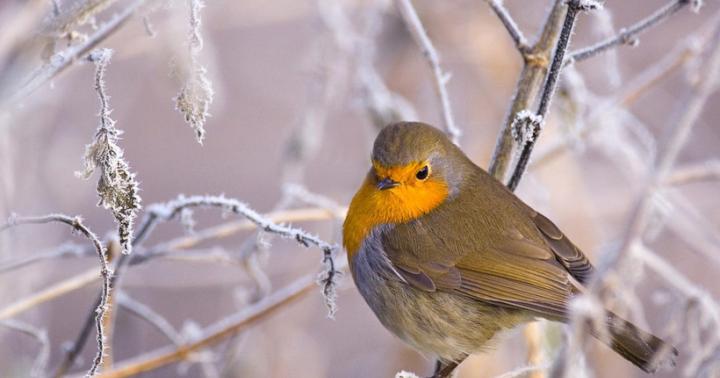eclectic pattern modern architecture for the brave creative people. The house looks very relevant due to its shape, bay windows, and an unusual multi-pitched roof. At the same time, the decoration of the walls is made according to the canons of classical architecture: light plaster, stucco molding on the corners of the building, decorative cornices. But the acute-angled pediment above the main entrance is completely characteristic of houses in English style. In our case, this detail makes the house look a bit like medieval castle. This mixture of styles creates a unique image of the house, which you want to consider.
The house can comfortably accommodate a family of 3-5 people.
On the ground floor there is a kitchen-dining room (22.2 sq.m) and a living room (27.8 sq.m). Each of the rooms has a quadrangular bay window. The living room has a fireplace for cozy evenings with the family. Also on the floor there is a bathroom, a boiler room and a spacious hall (21.7 sq.m), in which it is easy to arrange a comfortable entrance hall or an additional resting place.
On the attic floor there are three bedrooms of different sizes. The largest bedroom has a zest in the form of a bay window. Also on the floor is a guest room, two small storage rooms and a bathroom.
A garage is attached to the house. You can get into it not only from the street, but also from home. A convenient solution for Russian winters.
Detailed characteristics
- foundation type tape
- Overlappings reinforced concrete slabs
- roof covering metal tile
- Exterior finish plaster
- Roof structure attic
- Refinement or modification of the project on request
Boarding house type: Private
Care for people able:
- No problem
- Recumbent
- Memory problems
- Other
- wheelchair user
The boarding house "MIRRA" was opened by a professional team of people who are well aware of the practice of caring for the elderly. Our specialists were among the first in Russia who began to implement new standards for organizing the life of pensioners in old age.
Our cozy house is designed for permanent residence or temporary accommodation of the elderly in order to create for them, of course, a well-deserved worthy old age, to surround them with care and communication. In our boarding house there are rooms designed for a different number of people, rooms from single to six-bed accommodation. In this case, the elderly person lives comfortably and always has someone to talk to.
The democratic cost of our services will be comfortable for the middle class. In fact, with a permanent stay, the cost of monthly expenses does not exceed the same costs for a home caregiver. At the same time, we provide, unlike an example, a larger set of services and round-the-clock control. Relatives can be calm for their elderly parent in the boarding house "MIRRA", he is in reliable and caring hands.
The premises are equipped specifically for the elderly: handrails and ramps, equipment for wheelchair users, medical beds for bedridden patients, 24-hour care and health monitoring. Our doors are open to all older people, regardless of the degree of independence and the level of physical and mental health. Delicious diet food, green areas, a stationary outdoor gazebo, a garden, a rose garden and caring staff will complete the image of our home for the elderly. Come to the boarding house "MIRRA" for a visit or for permanent accommodation.
Museums
Behind the Garden Ring, not far from the Moscow Compound of the Holy Trinity Sergius Lavra, in a quiet shady lane, there is the house of the outstanding Russian artist V. M. Vasnetsov, built in 1894 according to the project of the artist himself in the neo-Russian style. V. M. Vasnetsov lived here for the last 32 years of his life (1894–1926). On August 25, 1953, a museum was opened in the house, in 1954 the 3rd Troitsky Lane, in which the house stands, was renamed Vasnetsov Lane. Immediately after the death of the artist, the relatives came up with the idea “to keep everything as it was, to arrange something like a house-museum”. Turning to the Tretyakov Gallery for help, they received consent to work together to organize a posthumous exhibition of works by V. M. Vasnetsov with the further prospect of creating a museum. On January 27, 1927, the artist's son, Aleksey Viktorovich Vasnetsov, submitted a statement to the Gallery Board stating that the family was ready to accept all obligations related to the organization of the exhibition. He was also approved as the commissioner for the conduct of affairs. Alexei Viktorovich was assisted by his sister Tatyana Viktorovna and his wife Zinaida Konstantinovna. M. V. Nesterov, P. Korin, Ap. M. and Vl. V. Vasnetsov and Scientific Secretary of the Tretyakov Gallery N. S. Morgunov. The necessary repair work, several hundred posters with information about the exhibition were printed and pasted up, tickets were prepared and a catalog was published. The exhibition opened on March 13, 1927. On the first day it was visited by about 600 people. In the following days, many interested visitors and school groups came to the exhibition, there were excursions. The exposition of the exhibition was preserved until 1933. The preface to the catalog indicated that the works exhibited at the exhibition, in particular the fairy tale cycle, were presented to the public for the first time and that landscapes, sketches and sketches would be shown in the future, “which, combined with what is now being shown, should form the Viktor Vasnetsov Museum” . The exhibition featured 212 exhibits: paintings, drawings and objects of arts and crafts. The exhibits were placed in the living room, the former classroom and in the workshop. The authors of the catalog supplied the fabulously epic pictures with short texts from the literary source. During the years of the Great Patriotic Wars The artist's relatives continued to live in the house. Large paintings were rolled up, the rest of the works were placed in boxes. The house itself was not damaged, but the fence and terrace were not preserved. In September 1946, the heirs expressed their desire to organize a museum in the house by the centenary of the birth of V. M. Vasnetsov in 1948 and negotiated this with the Tretyakov Gallery. The exhibition of paintings by the master, which opened in May 1948 in the exhibition hall of the Union of Soviet Artists, aroused great interest among visitors and contributed to the decision to organize a museum. On June 29, 1950, an order of the Council of Ministers of the USSR was issued on the organization of the House-Museum of V. M. Vasnetsov. The Committee for Arts under the Council of Ministers of the USSR issued an order to start organizing a museum, for which purpose it was necessary to receive the house, as well as art collections and property donated by the artist's heirs to the state. A month later, on July 29, 1950, the heirs signed an application to the Committee for Arts under the Council of Ministers of the USSR on the gratuitous transfer of property and valuables to the state for the organization of the House-Museum of V. M. Vasnetsov. On July 18, 1951, by order of the Committee, the “Regulations on the House-Museum of V. M. Vasnetsov” were approved. On August 28, 1951, an act of acceptance by the commission of the house was signed, works of art- paintings, graphics, works of arts and crafts, household items and property of V. M. Vasnetsov from his heirs. The first director of the museum (from 1951 to 1957) was the artist's nephew Dmitry Arkadyevich Vasnetsov, participant in the First World War and the Great Patriotic War, actor of the Musical Theater of K. S. Stanislavsky and V. I. Nemirovich-Danchenko, director of the Children's music school. Z. K. Vasnetsova was appointed the chief custodian. Together with Tatyana Viktorovna, D. A. Vasnetsov was engaged in repairing the house, restoring its layout and recreating the situation that was during the life of V. M. Vasnetsov. The architecture of the house was completely preserved, the furnishings of the house were restored at the beginning of the 20th century. The decoration of the dining room, living room and workshop has been almost completely preserved. In all other rooms, including the exposition rooms, original objects were presented, donated to the museum by the artist's family. The part of the collection that remained in the ownership of the heirs was transferred to the museum under the will of T.V. Vasnetsova in 1959 and on the basis of her deed of gift in 1961. Thus, all collections: paintings, graphics, objects of arts and crafts and everyday life, the personal archive and library of the artist, photographs and reproductions became part of the museum collection, which was replenished by donations from various people, purchases, and currently has about 25 thousands of museum items. In 1978–80, the house was restored, restored appearance outbuildings, where a janitor's, laundry and carriage house were located under a common roof, a cobblestone pavement and a brick path were restored in the courtyard. On the eastern side, a firewall (brick wall) erected in the 80s of the 19th century has been preserved, to which the mosaic “The Savior on the Throne” was transferred in the 1970s, made at the beginning of the 20th century according to the sketch of V. M. Vasnetsov in the St. Petersburg mosaic workshop under the direction of V. A. Frolov. On the northern and western sides of the house, a garden with centuries-old oaks and elms has been preserved. At the time of its organization, the museum was under the jurisdiction of the Committee for Arts under the Council of Ministers of the USSR. Practical guide the work of the museum was carried out by the General Directorate of Institutions fine arts. In 1954, the museum was transferred to the Ministry of Culture of the RSFSR, in January 1955 - to the Department of Culture of the Moscow Council. In 1963, it was decided to join the Museum of the History and Reconstruction of Moscow, and in 1986 the V. M. Vasnetsov House-Museum became part of the State Tretyakov Gallery All-Union Museum Association as a scientific department.


